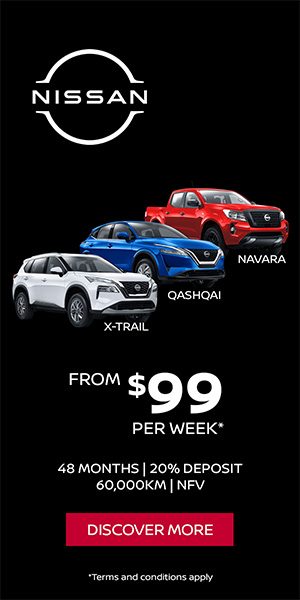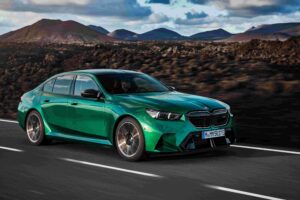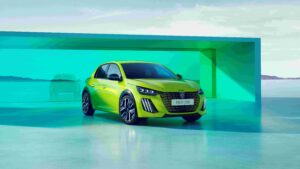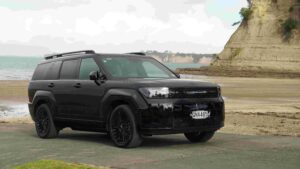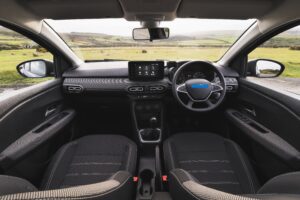A glimpse into automotive future.
In town for Kea’s World Class New Zealander Awards 2017 I managed to grab a moment of Wrightspeed Ian Wright’s (The man behind the powertrain) time. Over the course of the last two decades, Ian Wright has emerged as one of the leading minds of the electric transportation era. After co-founding Tesla Motors in 2003 and then breaking away to build the fastest street legal electric car in the world– the X1, Ian Wright proved that electric vehicles could deliver high-performance without compromising intrinsic efficiency. After creating the X1, a concept car based on a modified Ariel Atom, he went onto to pursue a larger vision—solving EV economics.
 Where are you originally from?
Where are you originally from?
Dargaville
When did you move to the States?
’93, but I left NZ in 1980 and moved to Australia, I was there for 13 years, met my wife there, she’s from WA.
The obvious first big question would be around Tesla, is that a dark past? During my research, there’s more information on Marc and Martin.
For me no, not at all. There is some darkness there, Martin and Elon are suing each other over this, that and the other thing but I managed to sidestep all of that.
You still have a part in it or a role to play?
No, not at all. Not since forever.
So how did it all come about (your involvement) What was your primary role in the whole thing?
It’s a bit of a long story. There’s a Caltech engineer by the name of Al Cocconi and he got serious about electric vehicles a long time ago. And he worked with a team of people that built a prototype car called the impact that eventually wound up being developed into the GM EV1. He didn’t want to work for GM he’s not that kind of guy (laughs) so after that project he started his own company called AC Propulsion and they had a business plan to do essentially what Tesla did. And Martin (one of the Co-Founders) was an investor in that, and so that’s where the ideas really came from. So the sort of short story is that Al Cocconi was the visionary, he built 3 of these little prototype electric sports cars, one of them was pretty quick – 0-60mph in 3.6 seconds with lithium iron batteries but there was nobody there that was really a business guy and they couldn’t really get from there to production, so Elon funded it and Martin took that basic business plan and we turned all that into Tesla. So the first thing I did when I got there was set up a licence deal with AC propulsion and we licence their powertrain and technology and that’s what we used in the first Tesla.
I’ve driven the 2 seater sports car, that looks like the Lotus
It’s based on the Lotus, the roadster. It’s a bit heavy.
So obviously it’s the technology that lights your fire as such?
Yeah, I mean the way Martin persuaded me to join him and get Tesla started was he borrowed Al Cocconi’s prototype car and drove it up to my house in Skyline, which is a very nice windy road up in the Santa Cruz mountains where all the sports bikes go on the weekends, and I drove it for 20 miles up there and got out of it with a big grin on my face. That was a lot of fun. I wouldn’t want to buy THAT car but I had an epiphany in that I could see how you could make this technology into something really interesting in a sports/performance car and that’s what persuaded me to join them and start getting Tesla going.
And when did you duck out of there?
I was only there for a year. So I set up the AC propulsion deal, the Lotus deal, got the engineering team started, we made some decisions about how to build the battery pack and we were building the first prototype based on an actual Elise, it wasn’t complete when I left.
The big handcuffing has been the battery power?
Batteries are a very heavy and big way to store energy. I mean you have a battery pack that weighs 300kg’s and it stores as much energy as a litre of gasoline. A lot more efficient of course, so it goes a lot further on that energy but it’s still not that much energy for that much weight.
In the P100D it boasted 500k’s on a full charge
Yes that’s right,but that’s not a cheap car. People approach me every now and again to do electric airplanes and every time I’ve run the calculations it comes out about the same, whether you’re talking about the size of a Cessna 172 or a 737, if you put as much of the highest level density batteries you can get into the airplane as the same weight of the fuel that it would normally run, instead of being able to fly 6 or 8 hours on fuel, you can only fly for 15 minutes on that much battery. So it just doesn’t add up.
Interesting. So where did you move after your year at Tesla?
I started up Wrightspeed and built a demonstrator based on the Ariel Atom, 0-60mph in 2.9 seconds. That got on TV a lot, beating Ferrari’s and Lamborghini’s, that was a lot of fun.
 Was that the X1?
Was that the X1?
Yes. Eventually that led to me getting investors and getting funded in 2010.
The current big venture is the Trucks?
Yeah, so the big decisions there were don’t build vehicles just build a powertrain and the target for the powertrain, so now you’re selling cell efficiency not style, not performance, you’re selling energy efficiency. So it’s got to make economic sense, you’ve got to save enough fuel with this efficiency to make it worth paying the extra cost for the electric powertrain, so if you study that and say ‘so what’s the payback time going to be in this vehicle and that vehicle on this drive cycle, bigger battery, smaller battery, range extender’ and inevitably that narrows down to be heavy trucks in urban environments with a range extender. And that gives you the shortest payback time.
So hence the Garbage trucks.
Well we started with Fedex trucks. Fedex was the lead customer with their delivery trucks and at that time diesel was $5 a gallon so it made a lot of sense, but it would have been smarter if we/I was smarter and we started with garbage trucks. It wasn’t until we got the Fedex trucks out there that one of the garbage operators came to us and said well that‘s great but what about doing these things. So we did the engineering and figured out that we could do those things and then ‘oh by the way we should have done these things first.’ (laughs).
 I remember as a kid milk floats, they used to all be on electric power.
I remember as a kid milk floats, they used to all be on electric power.
To make them quiet. Which is the thing that nobody seems to care about, but they are going to trust me. Because garbage trucks we have done and the buses are so quiet compared to the conventional ones that I think cites are going to start putting noise limits on this. I think that within 10 years you’re going to see heavy duty diesel engines disappear from town and urban environments because you can do it with electric vehicles and it’s so much quieter and cleaner.
On the subject of quieter, being an old petrolhead that I am, the emotion goes with quiet EV cars.
Yeah, I had a Maserati Gran-turismo S, 440HP, just magical sound. They obviously put an enormous amount of energy into the acoustics, little resonators on the intake…
Funnily enough, I spoke with Mike Flewitt from McLaren and he said that speed is great but there has to be an emotional connection.
Martin (Tesla Co-founder) was fond of saying that when the Model T came out they didn’t try and make it have clip/clop noises like a horse, it had its own sound, and I think he’s actually right in that, and nobody has paid attention to this yet as far as I am aware, but there are things you can do, if you put the same level of acoustics into an electric high performance car as Ferrari does. There’s some interesting audio signatures you can have, there’s a particular kind of electric motor that sings and the pitch goes up with speed and the intensity goes up with torque, you can play with that, emphasise it. In ours we have a range extender and it’s a gas turbine and there’s nothing quite like the sound of a turbine. So I wouldn’t write it off. I love the sound of the Maserati too but I think there’s room for a new thing with a new sound that’s got just as much acoustic engineering behind it and has it’s own acoustic signature and people will start to like that.
I think performance cars are only just starting to scratch the surface, so we have a patent on vehicle dynamics control that covers the case where you have a motor per wheel and you control them independently, and if you can imagine the kind of vehicle dynamics control you can get that way, very fast control bandwidth with lots and lots of torque and you can do all four wheels independently there’s lots of really cool vehicle dynamics control you can get. And the patent if you read it, it lays it out pretty well, and I think no-ones done a good job of that yet in an actual car that people can drive and when they do I think that’s going to become a big thing. The net effect will be you can get road going cars that ordinary people drive much closer to the limits of performance, they have to tone them down now because people that buy them think they’re Ayrton Senna but they’re not. But you can let ordinary drivers like us get a lot closer to that level of performance without getting into trouble. So I think that will become a big thing and there will be some emotion around that too.
What’s your thoughts on Autonomy?
Yeah, nah. look I think it’s a much much harder problem than people think. Sure it’s flavour of the month now, it’s trendy but it’s very hard and we’re not trying to do it. Our philosophy is take the driver input as gospel. So we look a steering wheel position, throttle position, brake position, we figure out what the driver’s trying to do and we try and make the vehicle go there, we don’t try and second guess him. I think if you study aviation, airbus have been doing autonomy in airliners for 30 years now and that’s a vastly easier problem. The sky is empty and in an airplane it’s extremely rare that anything happens that you have to take immediate action (he then gave a couple of air disasters that could have been prevented).
It’s that intersection of when something goes wrong and the software can’t do what it normally does and the pilot or the driver has to take over – do they still remember how to do that? And this whole business where you’re going to have this driver sitting there that notionally has to have their hands on the wheel but they’re actually watching a movie or texting or something, that’s already killed people and it’s going to kill a lot more people. I think Ford have said it’s either the driver’s in control completely or the computer is, there’s no middle ground, there’s none of this, you can sit there and do your email while you’re driving
There’s so many variables
Yes, and in cars there’s a billion things that happen where you’ve got to take responsibility within less than a second otherwise bad things happen and that’s not the case in airplanes. So I think doing it for airplanes is vastly easier and we still had some horrific accidents.
When the google guys first had their autonomous vehicles on the freeways around the Bay area, I used to amuse myself by cutting them off just to see what happened (he laughs).
The truck side of things, the case is there to have EV’s?
Not straight electric, in these heavy vehicles you can’t carry enough battery to do the day’s work, so in a garbage truck that would be about a $500,000 battery pack that would use half the payload of the vehicle it would also take up half of the space. So we use a smaller battery pack and a range extender and gas turbine generator. There’s a perfect case for that because we can save about 60% of the fuel and you get your money back on a capital cost with about 4 years.
What’s the life expectancy?
10 years, including the batteries, we use a very high power long life battery (lithium titanate)
The big fear for people is what do you do with the batteries?
They talk about a second life for them, I’m not to sure about that, but the reason everyone is afraid of batteries is because they used to be lead acid or nicad, nickel metal hydride and they all have heavy metals in them and are very toxic but lithium Iron batteries don’t have anything toxic in them and some lithium iron chemistry you can just about eat. So you can throw them in the landfill it’s not really a problem.
Where do you see the future of the automotive industry?
I’m somewhat unconventional in that fact I suppose, but I don’t think there’s going to be an explosion of electric cars. We’ve had good electric cars on the market in the US for 10 years now and it’s at 0.5% of the market and that’s because they’re so expensive with some limitations, I’m also not seeing the autonomous thing happen. What I think you will see is the high performance stuff, these guys that have just won LeMans, electric motors driving two of the wheels and getting some control out of that, so that’s just the beginning, that’s gonna get a lot better, so I think you’re going to see some very interesting performance cars with electric motors driving the wheels, they might still have an engine but it will be that control you can get and people are just starting to figure that out. Where I think you will see it completely take over is in garbage trucks and unromantic things like that.
 Is that the biased you talking?
Is that the biased you talking?
It’s economically compelling and when you layer on top of that cities are looking at the emissions you are allowed in dense urban environments, the noise you’re allowed – we’ll just take over. That’s not all trucks by any means, garbage trucks are probably the best example. City transit buses too, cement and delivery trucks, those sorts of things. Courier trucks depends on fuel prices. It’s higher here than in the US so that cut off point is at a different place. Not long haul, maybe augmented. Airplanes not ever, some boats but not many, there’s only a few applications that make sense there.
You’re so pragmatic about it all! On an entirely different note. What’s the best bit of advice you’ve been given?
Don’t date crazy women (laughs). From a business point of view, it was Nancy Kamei at Intel Capital she said ‘why are you trying to build vehicles, you’re not adding any value to the vehicle, you’re just adding value to the powertrain, so figure out how to take just the powertrain to market. It’s vastly less capital intensive than building vehicles and that’s the only place you’re innovating’ and she was absolutely right. I didn’t want to give up on the idea of sports cars but she was absolutely right.
Is that something you’re going to get back into?
Probably not directly. We’re talking to people that make performance cars. We’ll probably do some demonstrators for testing things but right now we’d think about doing that on the current corvette, that would be a good platform but we could be persuaded into something more interesting.
I’ll have a word with Mike Flewitt for you.
It’s a fairly hard packaging problem, none of the current mid-engined cars are candidates because there’s no room to put the front motors in there, the transmission that’s where your feet are and the rear-engined cars have the same problem. So front engine, rear drive has got the packaging space where we need it – which is why the Corvette is so interesting. I love mid engined cars for low polar moment but you can overcome all that (described in the patent) once you have control of all four wheels and you’ve got perfect slip control, you can do very interesting things with that.
The noticeable thing for me in the Tesla was the lack of slippage from the rear wheels.
There are videos of my X1 beating the Carrera GT down the dragstrip. It’s not because I had more power than it, because the GT had plenty of power, he just couldn’t get it to the ground. I had this perfect traction control maintaining the rear wheels at exactly the right slip rate to give me maximum traction all the way to the end.
It’s mind boggling how it happens.
It makes an enormous difference, it’s that control bandwidth you can get with electric motors and once people figure out that… I haven’t got time to do anything about it but somebody should write some rules for an electric racing series, the total opposite of Formula E. Formula E frustrates the hell out of me because they’ve basically written the rules so it plays up all the disadvantages of an electric drive.
Really? I know I find it dull to watch but..
It is dull to watch. This is what I would do. I would free up all the controls so you could do whatever software control you wanted, you can do 4 wheel independent motors, you can do torque vectoring, as much as you want, knock yourself out. You can’t do autonomy, the driver has to steer and drive the throttle and the brakes but to aid the driver with independent control of the wheels, knock yourself out. There shall be NO aerodynamic downforce at all, I want to see these things slide around the corners, I want to see wheel to wheel racing with both cars 45 degrees out of line and balanced because the software is holding you there, the software is giving you the control that you can drift these things together if you want to, the better software will give you the better slip control, the fastest lap time but the race is tight and short you can do it all on one battery charge, no battery or car swaps, make it really fast and intense, close racing, no downforce lots of slip, perfect control of slip – that would emphasise what you can do with Electric Drive. Now you can put a gas engine car out there, no aero downforce and watch Electric cars run away from it.
So I see you as the new Bernie?
Laughs
What’s next?
Well we’ve got $60m in backlog that we haven’t shipped yet, so number 1 for us is to get production really rolling and ship this stuff and satisfy the customers. Then we’ve got $500m in pipeline that we haven’t turned into orders yet so we need to ramp up production so we can address that, so that’s the priority for the company. Beyond that, we have actually figured out how to do some long haul stuff and we have people interested in that, so turning that into a product would be the next big thing and then we have people approaching us to use the turbine generators, batteries and inverters for stationary power applications for a building like this (the Viaduct Expo Centre), That’s got an enormous amount of potential too – we’ll partner with somebody for that.
Is NZ an ideal test bed for all of this?
Well NZ has very clean electricity and very expensive fuel and a good business climate.
So it makes sense for you to be here more?
We got approached by the NZ bus guys, Paul Jones is the CEO, a very visionary type of guy and they persuaded us to do buses and do the first ones in NZ and I’m pretty happy about that.
My father always says that there is money in muck – seems he may be wright!
Never miss a post – Subscribe now

